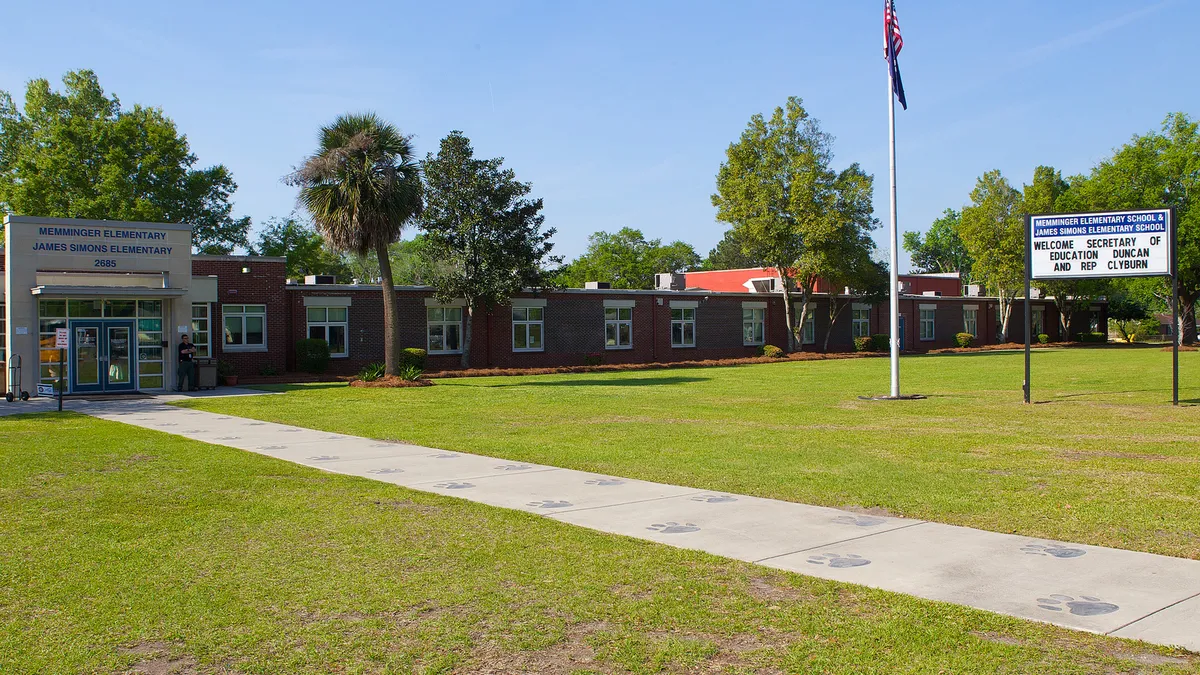Dive Brief:
- Many students in Virginia and other parts of the nation are attending school in substandard or even dangerous conditions because of a lack of funding for maintaining, updating, or building school facilities, the Washington Post reports. A 2013 study found that it would require more than $18 billion to renovate schools more than 30 years old in Virginia alone, and a 2014 federal study indicated that 53% of the nation’s schools were in need of repairs and upgrades. Estimates for addressing these school facility needs range from $197 billion to $542 billion.
- Schools that are not properly maintained or replaced can contribute to health problems in students and teachers, impact attendance rates at the schools and interfere with a student’s ability to learn. Neglected schools also impact student and teacher morale and are often indicative of equity issues, with schools in more affluent — and white communities — often better maintained than in low-income, minority neighborhoods.
- Some states and cities are increasing funding for school capital projects by raising local taxes or diverting more state funding to school construction. But some bond referendums have failed, and the additional funds that are made available are inadequate to meet the need. Some school districts are pursuing public-private partnerships to help address the issue and, at the federal level, Congress is considering investing $100 billion over a 10-year period to rebuild public schools.
Dive Insight:
Students and teachers are essentially trapped in public school buildings all day long. Many families have little choice in where their children attend school because of limited time, money, or transportation issues. When the school their child is assigned to is unsafe or unsanitary because of years of neglect, many families feel they have little recourse. And the poorest districts are usually the ones that suffer the most neglect.
Many schools are now seeing the impact of recession-level spending. Mold has become a major issue at some schools and is creating a health hazard for students and teachers alike. The school environment has an impact on students psychologically as well as physically. Run-down and neglected facilities can also affect a students' desire to attend school and their ability to focus when they're there.
Aging schools can also be a barrier to instruction because the space can't be adapted to more active and collaborative learning strategies and are not properly equipped for the technology used in modern classrooms. Some aging schools also don't meet current state health and disability codes. While these schools are often “grandfathered in” and are not required to meet the codes, that legal loophole does little to improve the safety or accessibility of the structures.
Most district and school leaders do the best they can with the aging facilities they have. In some states, lottery funding has been used for school construction, but those funds, in places such as North Carolina, were diverted to other needs during the recession.
School leaders can enlist the help of families, community members, and local business leaders in calling for the restoration of and increases in funding for school facilities. Many people are not aware of the conditions of their local schools, so taking photos, maintaining records and keeping this issue in front of local media and social media platforms may result in funding for specific projects. Holding public meetings in schools that need attention may also raise awareness. Greater attention to the issue can pressure federal, state and local lawmakers to address the condition of buildings for today's and tomorrow's students.













